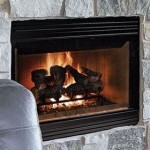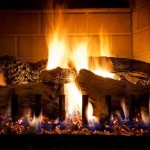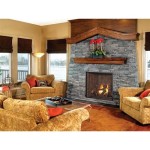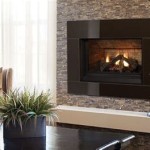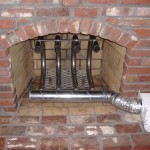Fireplace Insert Ratings: A Comprehensive Guide
Fireplace inserts offer an efficient and aesthetically pleasing alternative to traditional open fireplaces. By fitting directly into an existing fireplace opening, they provide enhanced heating capabilities, improved energy efficiency, and greater control over combustion. However, selecting the right fireplace insert requires careful consideration of various factors, making informed decision-making crucial. Understanding fireplace insert ratings is paramount for consumers seeking optimal performance and value.
Fireplace insert ratings encompass a range of metrics that quantify the appliance's performance characteristics. These ratings provide standardized data for comparison, enabling consumers to evaluate different models based on their specific needs and preferences. Key rating parameters include heating efficiency, heat output, emissions levels, and firebox size. Regulatory bodies and independent testing agencies establish these ratings, ensuring accuracy and consistency across different manufacturers.
Understanding Heating Efficiency Ratings
Heating efficiency, typically expressed as a percentage, indicates the proportion of fuel energy converted into usable heat. A higher efficiency rating signifies less wasted energy and improved fuel economy. For wood-burning inserts, efficiency ratings are often based on the higher heating value (HHV) or lower heating value (LHV) of the fuel. HHV includes the heat of vaporization of water formed during combustion, while LHV excludes it. It is crucial to determine which value is used for a particular rating to make an accurate comparison. Inserts with higher efficiency ratings generally require less fuel to produce the same amount of heat, leading to cost savings over time.
For gas and electric fireplace inserts, efficiency ratings are determined by the ratio of heat output to energy input. Gas inserts are subject to stringent efficiency standards, often exceeding 70% efficiency. Electric inserts, while technically 100% efficient in converting electrical energy to heat, should be evaluated based on their cost-effectiveness compared to other heating options. While the conversion is complete, the cost of electricity may be higher than other fuel sources.
Consumers should consult the EnergyGuide label, which is required for many fireplace inserts, to obtain information on annual operating costs and energy efficiency. This label provides a standardized comparison tool, allowing consumers to assess the long-term financial implications of different models.
Analyzing Heat Output and Heating Capacity
Heat output, measured in British Thermal Units (BTUs) per hour, indicates the amount of heat an insert can generate. A higher BTU rating signifies greater heating capacity, making the insert suitable for larger spaces. However, selecting an insert with excessive heat output for a small room can lead to discomfort and inefficient operation. Therefore, it is crucial to match the BTU rating to the size and insulation level of the area to be heated.
Manufacturers typically provide recommended heating capacity ranges based on square footage. These recommendations consider factors such as ceiling height, window area, and insulation levels. Consumers should carefully assess their specific heating needs and select an insert with an appropriate BTU rating to ensure optimal comfort and energy efficiency. Over-sizing an insert results in the user having to starve the fire of oxygen in an attempt to control the heat. This produces more smoke and creosote.
The type of fuel used also influences heat output. Wood-burning inserts generally produce a higher BTU output than gas or electric inserts of comparable size. However, the heat output of wood-burning inserts varies depending on the type and moisture content of the wood. Seasoned hardwoods, such as oak and maple, provide higher BTU output than softwoods. Therefore, it is crucial to use appropriate fuel to achieve the desired heating performance.
Evaluating Emission Standards and Environmental Impact
Emission standards, particularly for wood-burning inserts, regulate the amount of particulate matter released into the atmosphere. The Environmental Protection Agency (EPA) sets emission limits for wood-burning appliances, requiring manufacturers to meet stringent standards to reduce air pollution. Inserts that meet or exceed EPA emission standards are considered cleaner-burning and more environmentally friendly.
Lower emission levels contribute to improved air quality and reduced health risks associated with particulate matter exposure. Consumers should prioritize inserts that are EPA-certified or feature advanced combustion technologies, such as catalytic or non-catalytic systems, to minimize their environmental impact.
Gas fireplace inserts also adhere to emission standards, although their particulate matter emissions are generally lower than those of wood-burning inserts. Natural gas and propane are cleaner-burning fuels, resulting in reduced air pollution. Electric fireplace inserts produce no direct emissions, making them an environmentally friendly option. However, the electricity source used to power the insert may have indirect emissions associated with its generation.
Besides emissions, other factors impact the environmental aspect of using fireplace inserts. For wood burners, sustainably sourced firewood is crucial. For electric, considering sources of power is another factor. Gas is often considered a cleaner burning fuel source than solid fuel.
Ultimately, informed decision-making requires a thorough understanding of fireplace insert ratings and their implications for heating performance, energy efficiency, and environmental impact. By carefully evaluating these metrics, consumers can select an insert that meets their specific needs and contributes to a more sustainable future.

10 Best Electric Fireplace Inserts Of 2024 Tested And Reviewed

10 Best Electric Fireplace Inserts Of 2024 Tested And Reviewed

10 Best Electric Fireplace Inserts Of 2024 Tested And Reviewed
.aspx?strip=all)
Top 11 Gas Fireplace Insert Trends Of 2024

Best Fireplace Inserts Of December 2024 Forbes Home

Best Fireplace Inserts In 2024

Ventis Hei240 Wood Fireplace Insert Mace Energy Supply

Gas Fireplace Insert Cost Forbes Home

Cambridge 23 In Freestanding 5116 Btu Electric Fireplace Insert With Remote Control Cam23ins 1blk The Home Depot

The Best Wood Fireplaces Of 2024 Direct Learning Center
Related Posts

